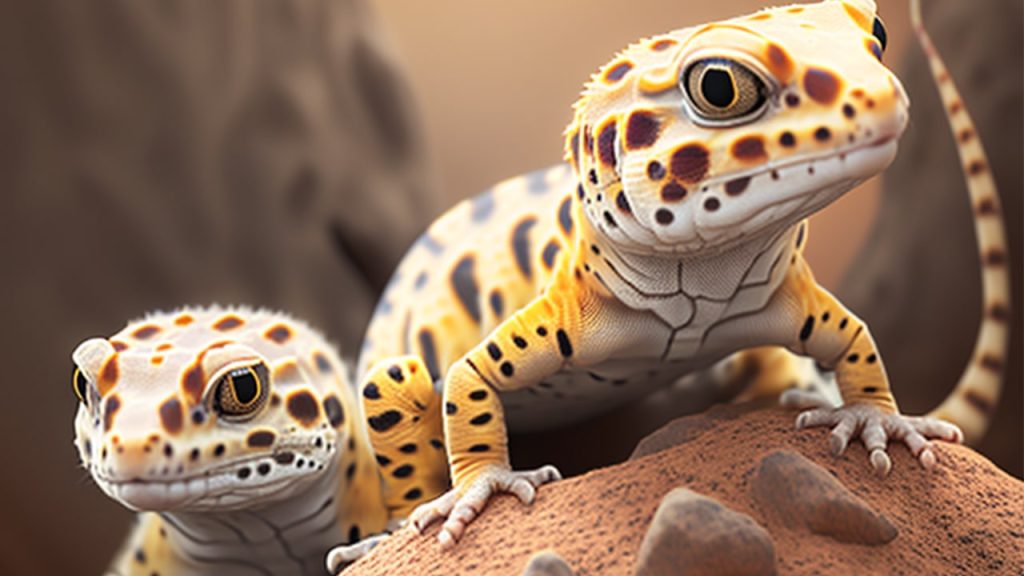As a team of reptile enthusiasts, we have a passion for breeding and caring for leopard geckos. In this guide, we aim to provide you with a comprehensive overview of breeding leopard geckos, including the necessary preparation, breeding process, and post-breeding care.
Contents
Preparing for Breeding
Before breeding leopard geckos, it’s crucial to ensure that the breeding pair is healthy and of the appropriate age. A female leopard gecko should be at least 18-24 months old and weigh at least 50 grams, while the male should be at least 10 months old and weigh at least 40 grams. It’s also essential to ensure that the breeding pair is not related, as inbreeding can lead to various health issues.
The breeding enclosure should be at least 20 gallons and equipped with a suitable substrate, such as paper towels or reptile carpet, and hiding spots. The temperature in the enclosure should be maintained at 88-90°F during the day and 70-75°F at night, with a basking spot of 92-95°F. A UVB light can also be added to the enclosure to provide essential vitamin D3.
Breeding Process
Once the breeding pair is ready, it’s time to introduce them to each other. The female should be placed in the male’s enclosure, as this can help to reduce stress and increase the chances of successful mating. It’s important to supervise the pair during this process and ensure that they don’t harm each other.
After successful mating, the female will lay eggs within 2-4 weeks. The eggs should be removed from the enclosure and placed in an incubator set at 82-86°F. The eggs should be checked regularly for any signs of deformities or discoloration, as these can indicate health issues.
Hatching and Post-Breeding Care
Leopard gecko eggs typically hatch within 45-60 days. Once hatched, the baby geckos should be kept in a separate enclosure with a suitable substrate and hiding spots. The temperature in the enclosure should be maintained at 88-90°F during the day and 70-75°F at night.
The baby geckos should be fed a diet of appropriately sized crickets or mealworms dusted with calcium and vitamin D3 supplements. It’s essential to monitor their growth and ensure that they are gaining weight and shedding properly.
Leopard Gecko Breeding Season
Breeding leopard geckos can be a fascinating and rewarding experience. However, before embarking on this adventure, it’s essential to understand the basics of leopard gecko breeding season. In this comprehensive guide, we’ll provide you with everything you need to know about leopard gecko breeding season, including the best time to breed, how to prepare for breeding, what to expect during the breeding process, and how to care for the offspring.
Understanding Leopard Gecko Breeding Season
Leopard geckos are known for their docile and gentle nature, making them popular pets among reptile enthusiasts. However, when it comes to breeding, there are some important factors to consider. Understanding leopard gecko breeding season is crucial if you want to be successful in breeding these fascinating creatures.

Leopard geckos reach mating maturity between 8 to 12 months of age, although some males may mature earlier. The breeding season for leopard geckos typically begins in late winter and extends through the spring and into early summer. During this time, male leopard geckos become more active and begin to search for mates.
The Best Time to Breed Leopard Geckos
Breeding leopard geckos can be a delicate process, and timing is crucial. The best time to breed leopard geckos is during the breeding season, which typically begins in late winter and extends through the spring and early summer.
It’s important to note that leopard geckos require a cooling period before breeding. This cooling period typically lasts for two to three months and involves lowering the temperature in their habitat to around 70 degrees Fahrenheit. This cooling period is crucial for triggering the breeding process and should not be skipped.
Conclusion
Breeding leopard geckos can be a rewarding and fulfilling experience for reptile enthusiasts. By following the necessary preparation, breeding process, and post-breeding care, you can ensure the health and wellbeing of your leopard geckos. If you have any questions or concerns, don’t hesitate to seek advice from a reputable veterinarian or experienced breeder.


